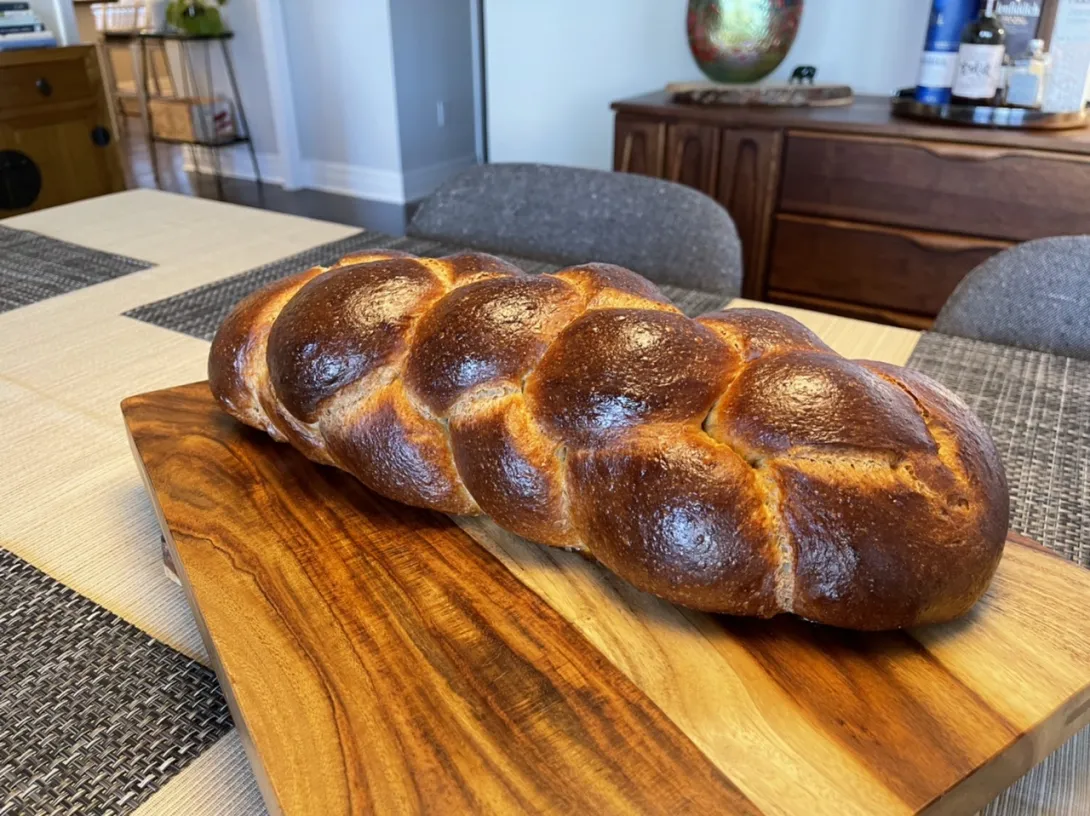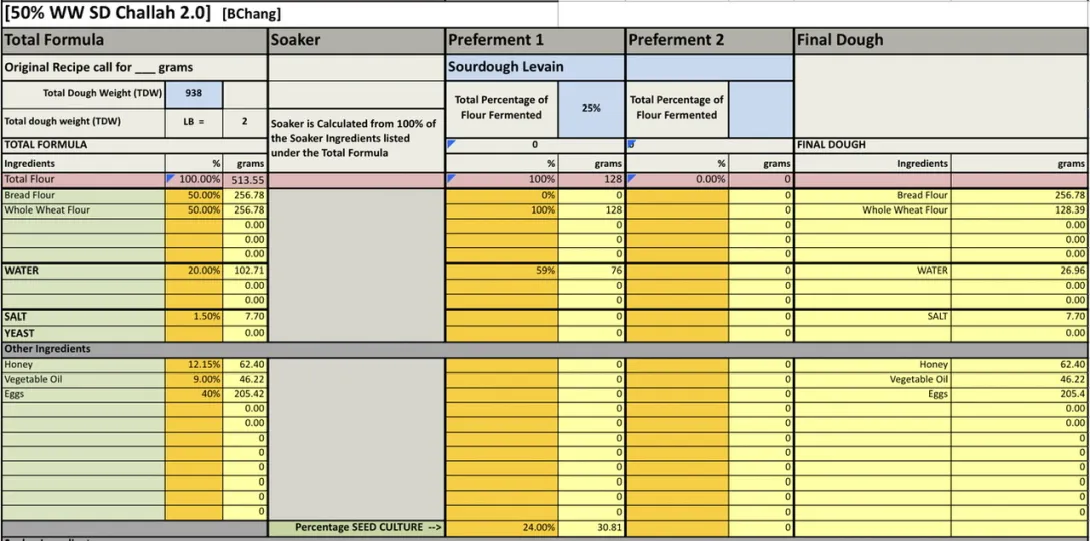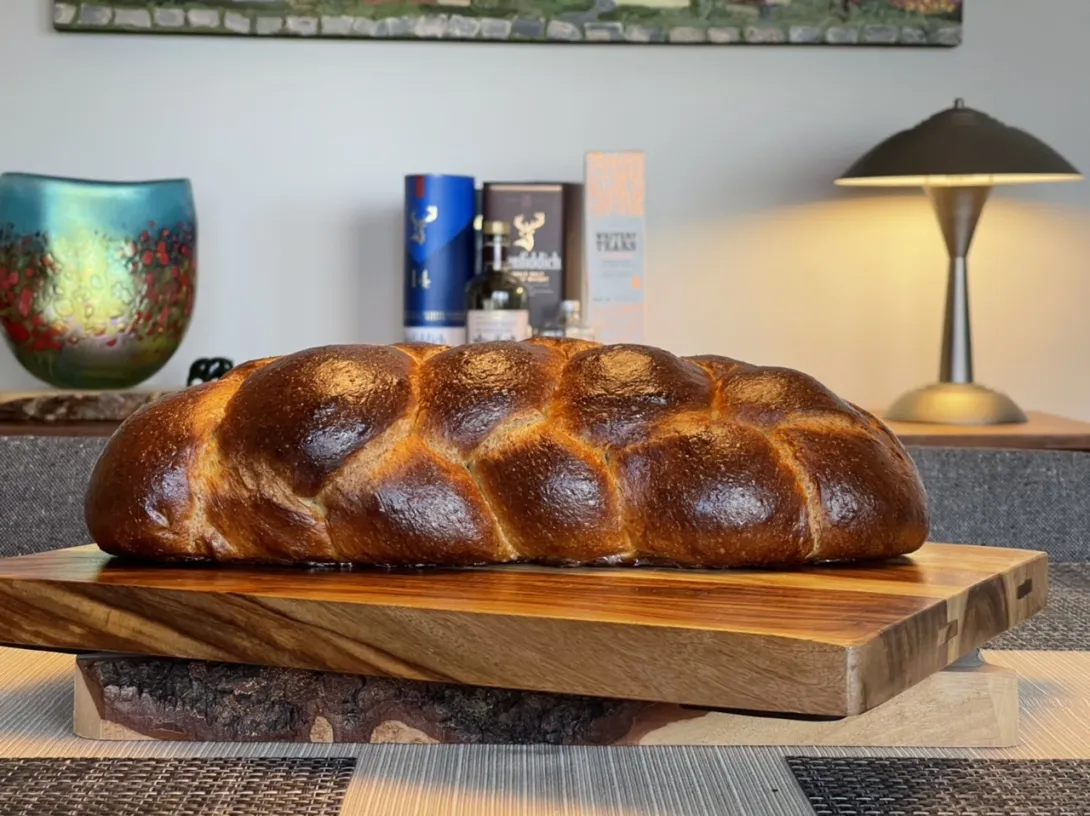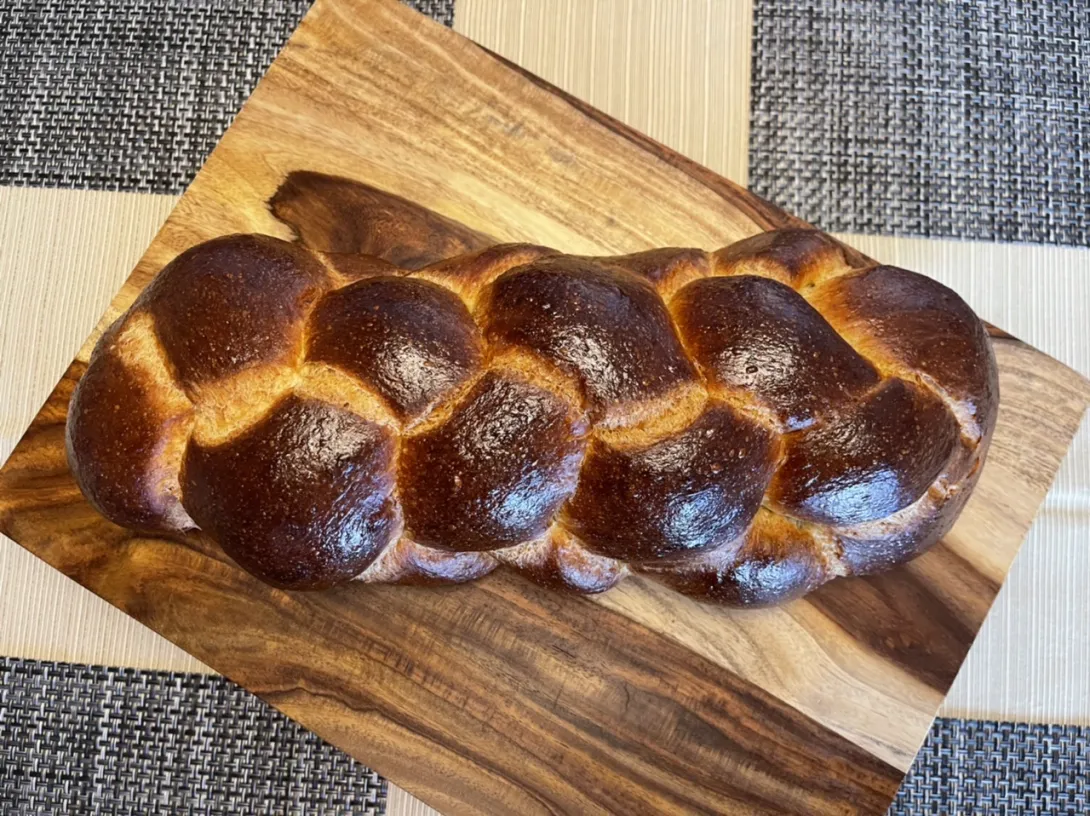We have friends staying over tomorrow night. I am planning on baking a strata for breakfast on Sunday morning. Because the strata requires an egg bread I decided that I couldn’t possibly just buy a grocery store challah for our friends’ breakfast. So the decision was made to bake a delicious 50% WW SD Challah and push fermentation further. This time I pushed the fermentation until the aliquot jar showed a full 190% rise at the time of baking. At this point the poke test showed that the dough just slightly sprung back. I should have waited just a bit longer, but my impatience got the best of me. For challah, you can see that it is under fermented when you see a lot of tearing between the strands when baked.


Procedures
- The night before baking, mix the starter and ferment it at 76-78°F for 8-12 hours.
- In the morning, in a large bowl or the bowl of a stand mixer, add the starter then water, then mix in the 4 eggs, salt and honey and mix until completely combined.
- Mix in all the flour until it forms a shaggy mass.
- Knead the dough on the bench or in a stand mixer until it is smooth and there is moderate gluten development. (Bassinage the hold back water to achieve the desired consistency) The dough should be quite firm. Gradually add the oil, the dough may break down, wait until it comes back together and before you add more. Mix until gluten is well developed.
- Transfer the dough to a lightly oiled bowl and cover it tightly. Ferment for about 2 hours. It may not rise much. At 82°F it rose 20-25%
- To make one loaf, divide the dough into two equal portions, and divide each portion into the number of pieces needed for the type of braiding you plan to do, so divide each by 3 to make 1 six strand braided loaf.
- Form each piece into a ball and allow them to rest, covered, for 10-20 minutes to relax the gluten.
- Form each piece into a strand about 14” long. (I like Glezer's technique for this. On an un-floured board, flatten each piece with the palm of your hand. Using a rolling pin, roll out each piece to about ¼ inch thickness. Then roll up each piece into a tight tube. Using the palms of your hands, lengthen each piece by rolling each tube back and forth on the bench with light pressure. Start with your hands together in the middle of the tube and, as you roll it, move your hands gradually outward. Taper the ends of the tubeby rotating your wrists slightly so that the thumb side of your hand is slightly elevated, as you near the ends of the tube.). You can consider rolling each rope of dough in two different types of seeds at this point for a decorative effect, or only a few of the strands.
- Braid the loaves. Braiding somewhat loosely, not too tight.
- Place loaf on parchment paper on a sheet pan. Brush with egg wash. Cover well with plastic wrap (brush with oil so it doesn’t stick to the dough) or place the pans in a food grade plastic bag, and proof at room temperature until the loaves have tripled in volume. About 4-6 hours.
- If it's quadrupled or more and when poked the dough only springs back a little, preheat the oven to 180°C/350°F. Gauge the dough again. Stick a finger lightly in the dough. If it makes an indentation that doesn't spring back, the dough is ready to be baked. If not, wait a bit more if you can.
- Pre-heat the oven to 350ºF with the rack in the upper third of the oven about 30 mins before final proof is complete.
- Brush each loaf with an egg lightly beaten with a pinch of salt. I do this twice.
- Optionally, sprinkle the loaves with sesame seeds and/or poppy seeds.
- Bake until done – 30-40 minutes rotating half way. If baking as one large loaf may take a bit longer, bake until sounds hollow or reaches 190ºF in the middle.
- Cool completely before slicing.


- Benito's Blog
- Log in or register to post comments
This is the video I put together showing how I plaited this loaf along with an oven spring Timelapse. Enjoy.
Looks good Benny. Good choice to bake one rather than store bought. I'm sure your guests will appreciate your talents and love the challah also :)
Cheers,
Gavin
Thank you very much Gavin, I hope the strata turns out well too.
Benny
Beautiful loaf Benny! That braid is perfect!
Thank you Troy, plaiting dough is very relaxing!
Benny
So beautiful !! I need to make another 50% WW challah. Your braiding...sigh....I try I really do but my brain just won't learn to do it and my hands are independently going at cross purposes...good thing I didn't want to be a surgeon :) c
Thank you Caroline, I’m no surgeon, but I enjoy braiding dough. I’m sure you could do it if you tried and took your time.
Benny
I love the way a challah looks sliced, the different directions you can see the crumb taking.
Here’s the blueberry strata I baked using this challah.
I bet that made an outstanding brunch!
Yes it was yummy but we have another 4 servings left over now LOL.
Great looking Challah Benny and your Strata looks fantastic.
Beat,
Ian
Thank you Ian, I was quite pleased with the challah and the strata. I have found that you really have to push the fermentation until the dough really barely springs back after the poke test for challah, one must be very patient.
Benny